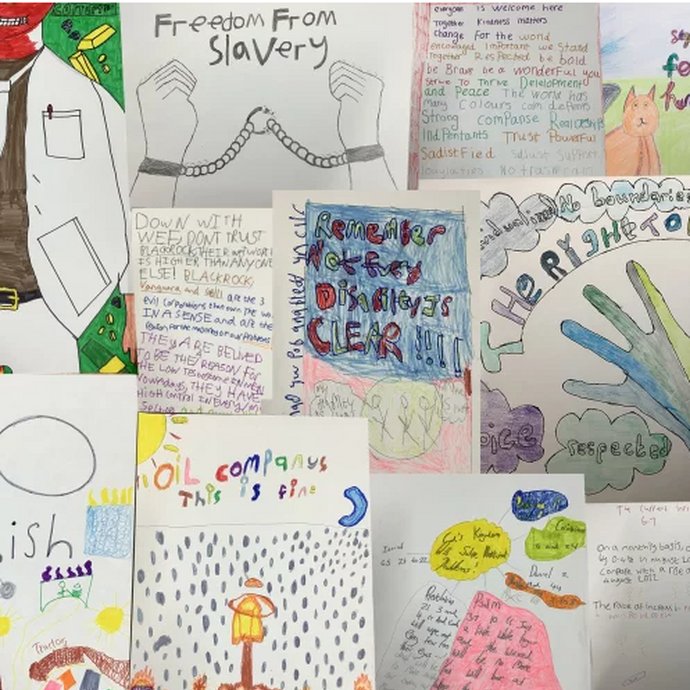Beyond brushstrokes: a lesson in protest art provides a provocative educational nudge
Coleg Ceredigion students have been creating protest art posters in a project which has helped them explore much more than art.
Students have been taken through an extensive research period looking at how modern and historical protests at an international level, have taken place and their impact on society.
The learners that have taken part are studying the Pathway 3 course at Aberystwyth campus.
This group of learners face some learning challenges and tend to exhibit a more gentle and passive approach in their educational journey so the aim was to look at all the examples in front of them and then ask the question of what could they protest about and why it’s important to have a voice in this world.
Feedback from the posters created, ranged from disability, the big banks, modern day slavery and fox hunting. However, the important message for lecturer Louisa Allison-Bergin, is that students have a voice outside and inside of college. “Through art and communication, we had great conversations,” she said. “The thought processes behind studying this was empowering and questions led to more questions and opened a platform for debate. I’ve also seen some positive changes within my students as they develop the skills to debate, to discuss and to understand other people’s points of view.”
Research included visits to Aberystwyth Arts Centre where the college has very strong links and to the National Library of Wales.
The group looked at the Welsh Women’s Peace Petition, an anti-war petition which has recently been moved from the National Museum of American History in Washington, to the National Library of Wales.
They also looked at more contemporary work such as the artist and blacksmith Angharad Pearce Jones whose distorted twisted and imploded gates and railings installation stem from her perception of increasing divisions in society since the Brexit movement and the new meaning that the pandemic brought to her work.
Louisa Allison-Bergin added: “This work really stretched students’ imaginations and asked them look inwards at how far they could stretch their individual protests, and using the law and forensic science module I taught them last year, they were also able to look at the difference between moral and legal issues and just where protest sits between the two.”

